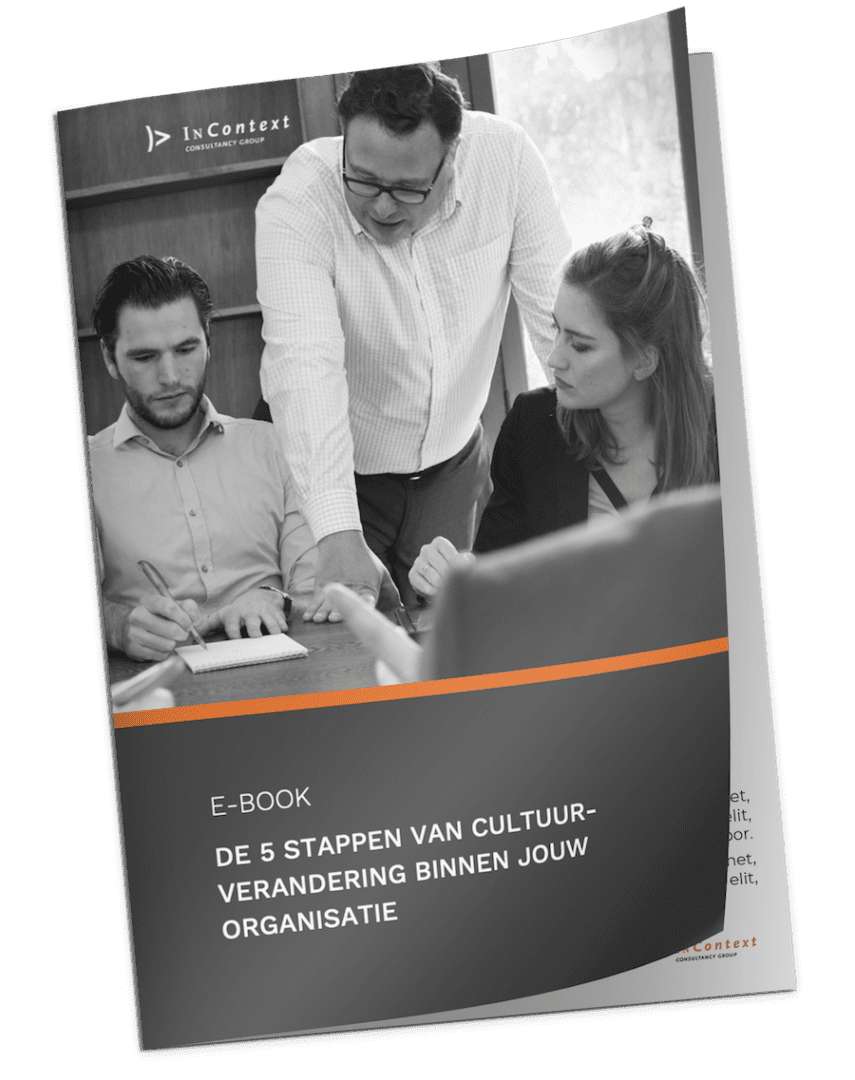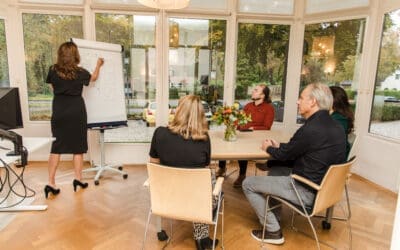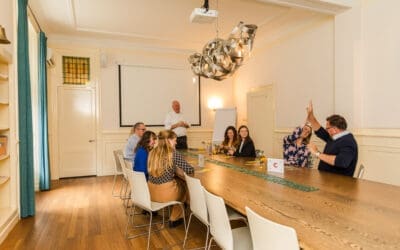Hopefully, we will soon end up in a post-pandemic era and return back to ‘normal’ completely. What does this mean for organizations? To what extent can we speak of ‘the normal’ at all now that we have experienced a year and a half of working from home? The effects of this – think autonomy, mobility and the social aspect of work – cannot be ignored. Consequently, one person will view a return to the office differently than another. And organizations will also deal with the post-core era in different ways.
One thing is beyond question for me: the theme culture within organizations becomes more relevant than ever in the new normal.
As an anthropologist
My fascination with (organizational) culture arose while studying COM (Culture, Organization & Management). I learned to look at organizations with the same wonder as an anthropologist looks at tribal societies. It is for this reason that I always explain my degree as organizational anthropology, looking at symbols, rituals and power within organizations, and with fascinating themes such as basic assumptions [1], rites of passage [2] and front and backstage [3].
Enter the conversation
As a manager, it is worth reflecting on the above themes. What rituals do you use when welcoming a new colleague? Do they first have to prove themselves before we accept anything from them, or do you take advantage of the fact that they have a fresh perspective and ask them about their findings as a relative outsider? Or: how do you have lunch in an organization? Do you do it collectively, at fixed times, do you mainly talk about work, does everyone go to their own place?
What rituals are common within your organization? How do your employees react to them? And is this in line with the mission, vision and culture within the organization?
Understand what happens
Also look at the interaction that exists between plans (KPIs, reports, vision documents) and what actually happens. If you want to transform organizations, it is important to first truly understand what is happening within them. To observe and listen to your employees. The end of the pandemic is a great opportunity to start the conversation again and look at your team with fresh eyes.
“First, really understand. Observe and listen to your employees.”
Togetherness
Yes, most organizations fortunately managed to find their way during the Covid crisis. Working from home seems to have gone smoothly for most people, and where initially we were still often fiddling with Teams and Zoom, we seem to have become quite adept at it by now. And so the pandemic has shown us new possibilities. But still: togetherness, meeting each other in organizations has disappeared for a long time.
What can we learn with one another from the pandemic. What new practices do you want to keep? And which ones absolutely not? But also: how do we want to deal with each other in the “new normal”?
Reconnecting
I believe that at this time, when organizations and employees are busy finding their way into the new normal, beautiful things can emerge. People are meeting at the coffee machine again, meetings and brainstorming sessions are taking place live again, teams want to be reconnect. But it also raises the question of how we now deal with working from home and digital meetings. And with more general questions like: How do we do things here? What are we and aren’t we? Also, how do we treat each other? And what things we did before the pandemic are we absolutely not going to do now, or do differently?
In short, cultures within organizations will have time to re-form and that deserves attention. Especially now!
[1] The deepest beliefs that are rooted in people or groups of people, and that (partly) define their culture.
[2] Transitional rituals are used in many cultures around important events (births, puberty, military service, marriages, funerals) to signify the transition from one social status to another. Organizations also use such rituals to welcome new colleagues and assign them a new status (“you are now one of us”).
[3] Different behaviors that people exhibit in various settings of everyday life. Observed by Canadian sociologist Erving Goffman who presents the world from a dramaturgical perspective: life as a theater in which actors (people) play different roles (interactions).
Continue reading about these topics? Then read the book The Corporate Tribe (2015) by Jitske Kramer & Danielle Braun. They draw parallels between organizational culture and tribal customs around the world in this inspiring book.
Want to know more about organizational culture and culture change?
Then download our latest e-book ‘The 5 steps of cultural change within your organization’.
We do not complicate culture change unnecessarily. In this inspiring e-book you will find the necessary background and a five-step approach to strengthen the culture within your organization.




